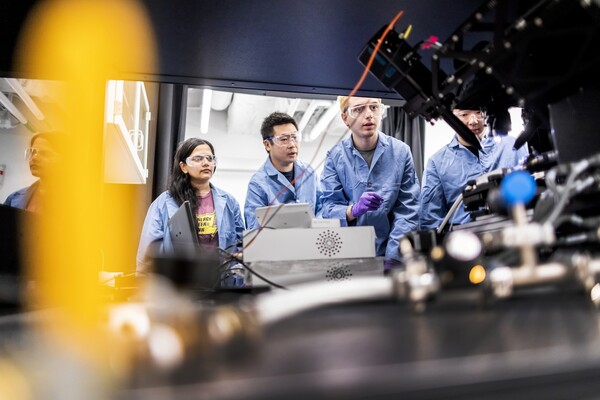
nocred
The event was billed as a program on “Old Recipes and How to Make Them Work.” The speaker: Fritz Blank, chef of Deux Cheminées, one of Philadelphia’s premier restaurants, and the proprietor of an impressive collection of old recipes, cookbooks, pamphlets, menus and other food-related material, some of which was on display in the Kamin Gallery corridor at Van Pelt-Dietrich Library Center, the site of the talk.
So of course there would be food, and cooking demonstrations, right? Half right. Food there was in abundance, including some of Blank’s favorite comfort foods—his grandmother’s German potato salad and Viennese pickled herring. But no cooking was going on, for as Blank explained, “This is a library, and they don’t allow flames inside.”
No matter. The 200 or so people who showed up for the opening event of the University of Pennsylvania Library’s “A Chef and His Library” exhibit Oct. 6 came mainly to see and hear the chef himself, and they all left sated.
Old-fashioned cooking trick
So how does one make old recipes work properly? “The first thing you should do is to mentally project yourself into the date and location of the dinner you’re preparing,” Blank said. “You need to wake up and imagine it’s Vienna in 1730.”
Equally important, he said, was a need to recognize the changes in food over time. “Many of the ingredients in historic recipes either didn’t exist or have been significantly modified.” Take celery, for instance. The mild dip carrier and accent vegetable of today bears no relation to the bitter, nearly inedible plant that existed before the 1920s. And, he said, “the salting and smoking of meats and fish were far more severe in the past,” because the purpose was to preserve them, not merely to add flavor. As a result, he said, “Our palates have become attenuated. We don’t appreciate heavier flavors.”
Viennese fusion cooking
Like the dishes, the talk also bore a distinctive German flavor. Drawing parallels between today’s “fusion” cooking craze and Hapsburg Vienna, Blank noted that the cosmopolitanism of the 18th-century city made it possible for its residents to experiment with food in a way previously unimaginable. “Beethoven was very fond of Parmesan cheese,” he said. “At the time, you couldn’t get it outside of Parma and Vienna.”
Despite the absence of cooking equipment, Blank was able to share one important point on technique. “The art of a good meal lies here,” he said, pointing to his tongue. “One must taste in order to properly execute a recipe.”
And taste the guests did, after hearing a musical second course from the Philadelphia Singers. Blank did manage to get a historic dish into the dessert section: a pound cake with fennel seeds, popular in the 1700s but largely unknown today.
Some of the items on display drove home Blank’s point about projecting yourself into the time and place of the recipe. One of them was a week’s worth of “Depression dinner” menus published by the A&P supermarket chain in 1933. All 21 meals, the newsletter stated, could be provided for about $11 to $13, including roast duckling for Sunday dinner. “Do you know what duck goes for at the Reading Terminal?” Louise Braunschweiger, a Friends of the Library staff member, asked me. “It’s $14.95 a pound.”
Blank had a career as an Army microbiologist before friends urged him to open a restaurant 24 years ago, following a series of dinners he prepared for them from recipes in Life magazine. He still finds inspiration in his library today. “Reading that A&P letter from the 1930s, you run across combinations of ingredients you may have forgotten and say, Hey, that’s a great combination! I should work with that again.”
The library—whose shelves are supported by huge cans of College Inn chicken broth, also on display—is as expansive and eclectic as Blank himself. “You could spend every day for two years in that library and tell a different story each day,” said exhibit curator Matthew Rowley. “The hard part was picking out what stories to tell.”
“A Chef and His Library” is on display in the Kamin Gallery, first floor, Van Pelt-Dietrich Library Center, 3420 Walnut St., through Jan. 3. A series of Wednesday evening lectures tied to the exhibit continues through Dec. 18 at 5:30 p.m. To R.S.V.P. or for more information, call 800-390-1829.
Sandy Smith

nocred

Image: Pencho Chukov via Getty Images

The sun shades on the Vagelos Institute for Energy Science and Technology.
nocred

Image: Courtesy of Penn Engineering Today